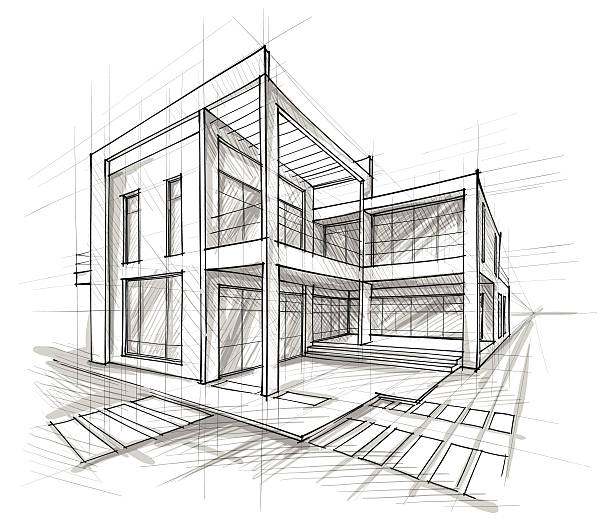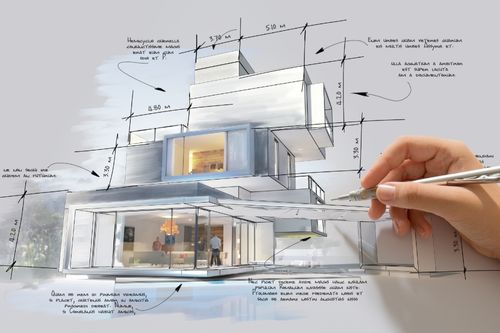Transforming Rooms: The Vision of CDA Architects for Modern Living
Transforming Rooms: The Vision of CDA Architects for Modern Living
Blog Article
The Important Duty of an Architect in Forming Lasting Urban Environments for Future Generations
The function of a designer in crafting lasting urban environments is progressively critical in reacting to the obstacles of climate modification and urbanization. By flawlessly incorporating ecological principles right into their layouts, architects not only enhance the aesthetic and useful quality of urban areas yet also address pressing issues such as energy efficiency and social equity. Their experience in cutting-edge products and neighborhood interaction forms developments that resonate with regional values and ambitions. As we discover the intricacies of this field even more, it becomes evident that the future of urban living might pivot on the very techniques designers employ today.
Recognizing Sustainable Urban Design
Lasting metropolitan layout incorporates ecological concepts with metropolitan preparation to produce environments that are not just livable yet likewise resilient. This strategy highlights the importance of including natural systems into the urban material, guaranteeing that growth satisfies the requirements of the existing without compromising the capacity of future generations to satisfy their own demands. Secret elements of sustainable metropolitan design consist of effective land usage, the promotion of biodiversity, and the combination of green areas, every one of which add to improved lifestyle for locals.
In addition, sustainable metropolitan style focuses on the reduction of the metropolitan warmth island effect, improved air high quality, and reliable stormwater management. It motivates the usage of renewable resources and energy-efficient building methods, which significantly lower carbon impacts. Sustainable city design promotes social equity by producing accessible public areas and advertising mixed-use growths that provide to varied populations.
Via thoughtful preparation and cutting-edge layout approaches, sustainable metropolitan atmospheres can improve area strength versus climate change while promoting economic growth. This holistic approach not just addresses prompt city obstacles yet additionally prepares for much healthier, a lot more lasting cities for generations to find.
Secret Obligations of Designers
Architects play a pivotal role fit lasting metropolitan atmospheres by translating design concepts right into concrete frameworks and areas. Their obligations encompass a large array of tasks that contribute to the total success of city style projects.
Firstly, architects perform detailed site analyses to understand the environmental, social, and social context of their jobs. This fundamental expertise notifies their design decisions, making sure that structures harmonize with their surroundings. They additionally participate in joint procedures with stakeholders, consisting of city planners, engineers, and the area, promoting a comprehensive strategy to city growth.
Additionally, engineers are tasked with developing styles that maximize energy efficiency, source conservation, and performance. They have to comply with regional zoning laws, constructing codes, and sustainability certifications, making certain compliance while pressing the boundaries of technology.
In addition, designers are responsible for handling the style process, collaborating with various professionals throughout the building and construction phase to guarantee that the vision is realized precisely (cda architects). Inevitably, their role is not solely regarding aesthetic appeals; it is regarding producing durable, adaptive spaces that enhance the quality of life for existing and future generations, laying the groundwork for sustainable metropolitan living
Innovative Materials and Techniques

In addition, innovations in innovation have led to the advancement of high-performance products, such as protected concrete kinds (ICFs) and solar glass, which contribute to energy preservation and harness renewable resource. Methods such as passive solar style and eco-friendly roofing systems better exhibit how architecture can integrate with all-natural systems, minimizing dependence on man-made heating & cooling.
Furthermore, the combination of clever products, which adjust to ecological adjustments, supplies encouraging opportunities for discover this enhancing building efficiency. These products can reply to temperature fluctuations or dampness levels, enhancing comfort and sustainability.
Eventually, the strategic option and application of cutting-edge products and techniques encourage engineers to produce urban spaces that are not just practical and aesthetically pleasing yet also durable and eco accountable, making certain a sustainable future for generations to find. cda architects.
Area Involvement and Cooperation
The success of innovative materials and techniques in lasting city design is substantially improved by active area involvement and partnership. Designers must recognize that the constructed atmosphere profoundly influences the lives of neighborhood citizens, making it vital to involve them in the layout process. Engaging the area promotes a sense of possession and responsibility, ensuring that developments not only fulfill aesthetic and functional requirements but additionally show the values and ambitions of those who populate them.

Effective neighborhood interaction also aids in prioritizing social equity within urban advancement. By considering the voices of marginalized populations, this content designers can create spaces that are inclusive and fair. In this means, neighborhood interaction and partnership end up being important to attaining truly lasting city settings that offer the requirements of current and future generations.
Future Trends in Lasting Style
An arising concentrate on flexible reuse and round economic his explanation situation concepts is established to redefine the landscape of lasting architecture. As cities grapple with increasing populace thickness and environmental challenges, architects are increasingly transforming to techniques that optimize existing frameworks as opposed to going after new builds. This approach not just protects cultural heritage but likewise substantially decreases resource usage and waste.
Additionally, advancements in modern technology are shaping future trends in lasting architecture. The assimilation of clever materials and structure systems allows for real-time energy monitoring, improving efficiency and decreasing carbon impacts. Developments such as green roof coverings, living walls, and energy-generating exteriors are coming to be common practices, better promoting eco-friendly balance within city environments.
In addition, a shift towards biophilic layout is acquiring grip, highlighting the connection between nature and human wellness. By incorporating all-natural aspects, architects develop areas that foster psychological wellness while advertising biodiversity.
Conclusion
Finally, architects are crucial ahead of time lasting urban atmospheres with their expertise in design, cutting-edge materials, and neighborhood engagement. By focusing on energy effectiveness and resource conservation, these experts add to the creation of durable urban spaces that meet the needs of existing and future generations. The combination of ecological concepts not just enhances livability however also promotes social equity, making certain developments reverberate with the values and ambitions of the areas they serve.
Report this page